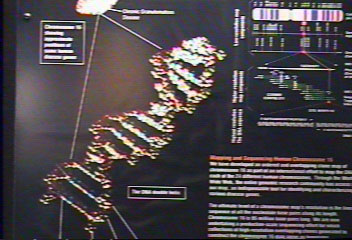
Los Alamos National Laboratory Museum
| We headed north out of Santa Fe towards Durango, Colorado. First we stopped at Los Alamos to visit the Los Alamos National Laboratory Science Museum. We thought that Los Alamos Labs was a nuclear outfit but learned they are involved in many other disciplines. Robotics had emerged as a by-product of the technology for handling atomic material. This robotics technology was later employed to perform the thousands of sampling and processing operations necessary to map the human DNA. |  |
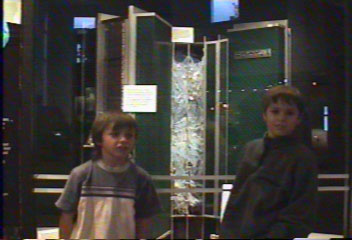 |
Here Mitch and Max are standing in front of a Cray I
super computer. As I recall it was built in the late 60's for several
hundred thousand dollars and processed data at a speed similar to today's
Pentiums. I think the speed was around forty or fifty megahertz.
We took the main road up the hill to Los Alamos. It is a very steep road. On the way out we crossed the bridge and went down the truck route which travels through a long ravine. As we joined the main road below we notice a small fire in the trees over the next hill. We now think this was the controlled burn that grew out of control the next day and eventually overtook the entire area. |
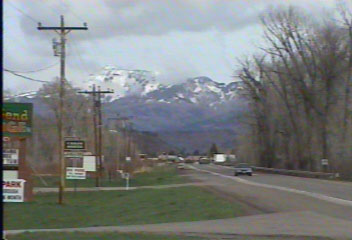 |
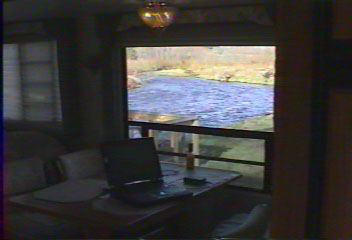 |

We arrived in Durango the next day and set up at United RV Park just north of town. To the left of this picture is the office and three rows of RV parking. Restrooms and laundry straight ahead, then to the right is the narrow gauge rail line. The old steam train makes scenic trips to Silverton, Colorado every day. The horse corrals and tent camping is to the right. Below you can see the Animas River to the left of the tent area and horse pasture. The river runs right through Durango where there is great river rafting with a park and bike trail along the side. There are many cables hanging across the river holding gate markers for kyak racing. One evening we went to the park and watched the fun. The river was flowing fast and strong with the spring melt.

| Max enjoyed pulling grass and feeding the ponies.
We were here for several days. Two nights before
we left San Diego the gray water tank that holds the shower and bathroom
sink water had broken open. We could still use the tank since the
split was on the top. We had ordered the tank and picked it up in
Las Cruces New Mexico. Durango looked like a great place to spend
a couple of days replacing it.
|
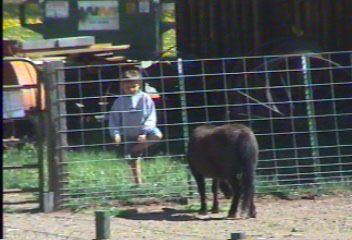 |
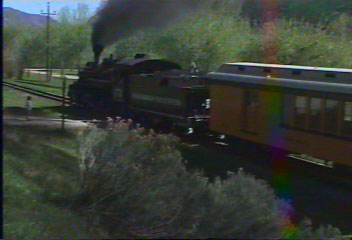 |
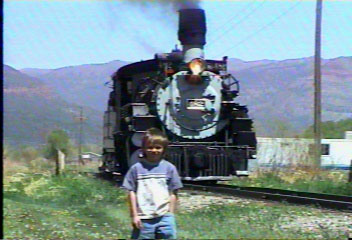 |
| Mitch was very interested in making natural dyes.
He had learned about this at the Folk Art Museum in Santa Fe while preparing
sheep's wool and making yarn.
While Ed worked on the gray water tank, the boys collected a variety of plants and tree blossoms to make dyes. Some they mashed and others they soaked in water and left in the hot sun. Mitch made a chart with a drawing and description of the plant and a sample of the color it produced. They both painted pictures with their homemade paints. |
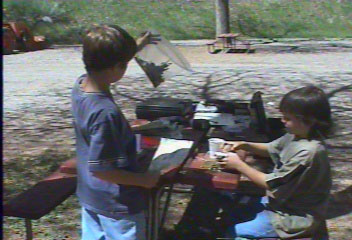 |
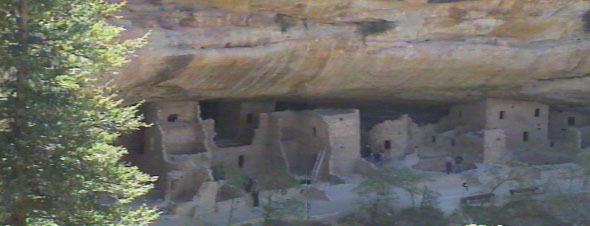
This national park preserves a spectacular reminder of a thousand year old culture. Archeologist have named these people Anasazi, from a Navajo word translated as "the ancient ones." Kopapelli, the flutist, is the famous icon of the Anasazi.
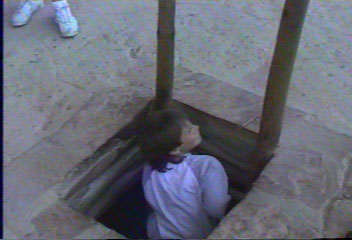 |
 |
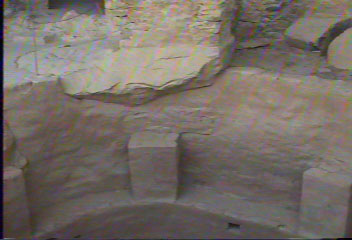 |
The roof is built upon columns along the side of the
circular structure. Logs are placed on these columns to form an octagon
and successive layers of smaller circular octagons are stack on top to
form a log dome. the dome is packed with small branches and the hole
is backfilled with dirt to form a flat surface on the top.
As the ranger pointed out, a flat surface is a highly prized commodity for cliff dwellers. |
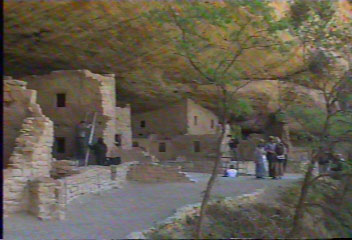 |
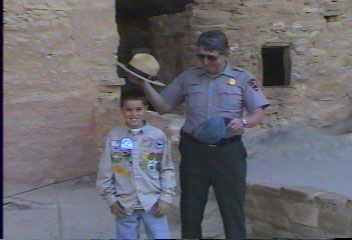 |
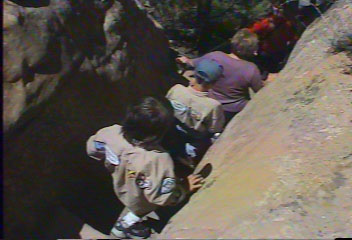 |
Next we visited the "Cliff Palace." We travel
down a narrow steep path with many steps. This site is a ranger lead
program in order to ensure preservation of the dwellings. The ranger
also provides a lot of facts about the dwellings and current understanding
of the people that lived here.
A few decades ago theories stated that the cliffs provided
a good place for protecting the community from warring tribes. Today
these ancients are seen as a peaceful, agriculture people and no evidence
exists to show otherwise.
|
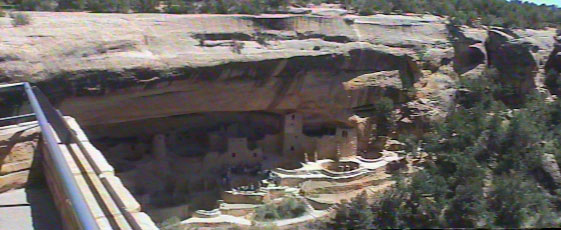
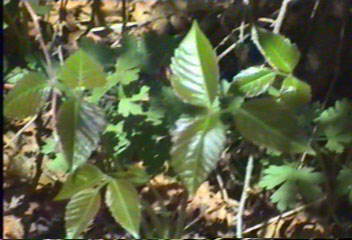 |
Anybody recognize this plant? Since we're from
the Pacific Northwest we're familiar with a plant called Nettles and know
to stay away from it. We had heard about this famous plant but nobody
in our family had seen it before.
Yes, it's Poison Ivy. I hope we can remember what it looks like since we'll most likely stumble into more of it on our travels. |
|
|
|
|
|
ã
copyright Nodland 1999-2020